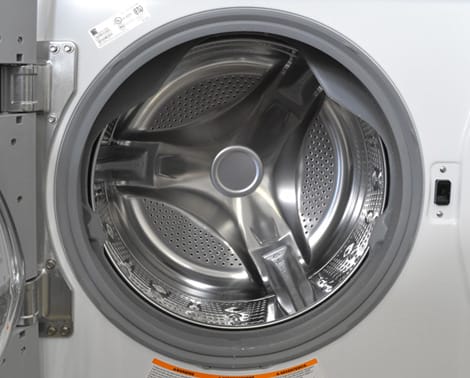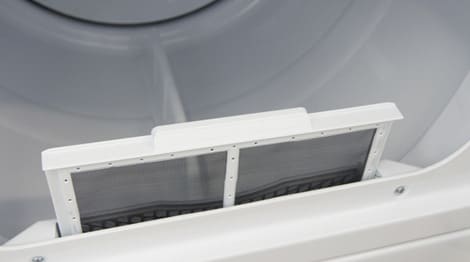9 Ways to Keep Your Washer and Dryer Healthy
Tips to keep your washing machine and dryer working safely and effectively.
 Credit:
Credit:
Products are chosen independently by our editors. Purchases made through our links may earn us a commission.
Whether you just bought a new washer and dryer, or you're stuck with one that's been “in the family” for a while, there a handful of steps you should take to keep your laundry machines working safely and effectively.
Washing Machines
Leave The Door Open Between Cycles
If you have a front-loading washer, the rubber seal around the door can start to reek over time. Washing machines are designed to hold in water, so if the front door stays closed between wash cycles, it ends up holding in all the moisture from the previous wash, creating an environment in which mold can grow. To prevent foul odors from stinking up your washer, leave the door open between cycles, which allows the rubber ring to dry. Whirlpool makes a washer with so-called Dynamic Venting Technology feature, which circulates air between washes to prevent bad odors, even with the door closed.

The door seal is designed to hold moisture. Keeping the door completely shut can create lingering odors over time.
Clean The Water Filter Regularly
High-efficiency washers use such a small amount of water that the dirt and grime from your clothes is more concentrated and more likely to clog the filter. If this happens, your clothes might not get cleaned, and it might even damage your machine. In many washers, the filter sits in a small door in the front of the machine, but consult your owner’s manual if you can't locate it.
Position Your Drain Hose Appropriately
If it’s too far above the washer, too low in the drain pipe, or runs under the washer, the hose can siphon dirty water into the tub instead of draining soapy water out of it.

Choose The Proper Wash Cycle
In many machines, the whites cycle is meant for use with bleach, usually including a secondary rinse to get rid of any lingering smells. Using it without bleach may not get your whites white, while adding bleach to some cycles might leave a scent of bleach in your clothes. Also consider the delicate cycle, which can save you money by not wearing down your clothes as quickly. Read your manual for details on which wash cycle to use, and when.
Dryers
Shorten The Vent Pipe The longer the vent line, the more effort a dryer needs to expend to push out moist air, which can mean longer dry cycles. Check to see whether the vent has a more direct path to an output area, and that the line isn’t wound or tangled. Specifics on the ideal length vary based on the brand and model, vent materials used, and other factors, so check your manual.
Clean The Lint Trap
This seems obvious, but plenty of people skip this step. Also check your vent line for lint buildups every so often. Lint is very flammable (some take it with them on camping trips to help start fires), so a line clogged with lint poses a very real fire hazard.

Uncleaned lint traps mean longer dry cycles, and can even pose a fire hazard.
Don’t Over-Dry Your Clothes
This can cause colors to fade, cause clothes to shrink, and wear out your washer more quickly. One standard cycle is usually enough.
Use Appropriate Settings
Your dryer has multiple settings and cycles for a reason, folks! Break out the manual, or search for it online for a guide on how to select the right dryer cycles.
Don’t Overload The Dryer
This could result in longer drying times, which uses more electricity and wears out the dryer sooner.
When in doubt, read the manual, and consult local public safety officials for safety and fire-prevention tips.
More on clothes dryers
- The Best Dryers We've Tested
- The Best Steam Dryers We've Tested
- The Best Large-capacity Dryers We've Tested
- The Best Ventless Dryers We've Tested
- Everything you need to know about ventless dryers
- The Best Washer-Dryer Combos We've Tested
- The Best Washer and Dryer Sets We've Tested
- Hot dryers may be damaging your clothes—here's what to do
- 8 things to consider before buying a new dryer
- Not Normal— 7 other laundry settings and when to use them
